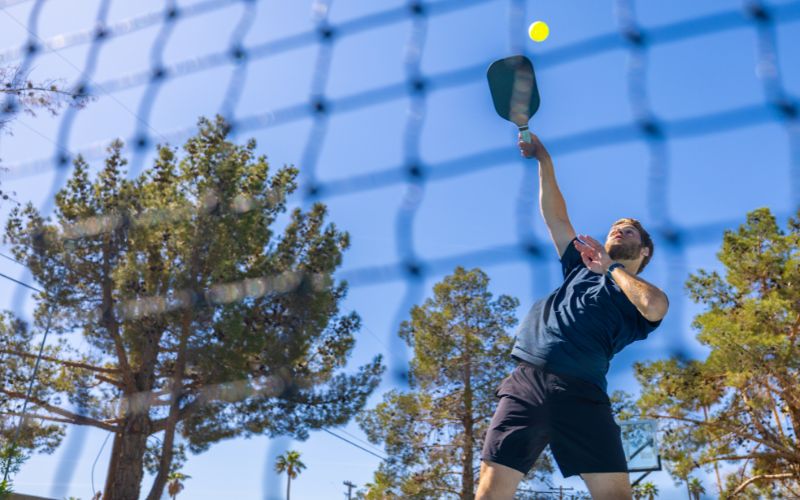Pickleball, a sport that combines elements of tennis, badminton, and table tennis, has surged in popularity over the past few years. With its growing appeal, understanding the various pickleball skill levels is essential for players looking to improve their game, compete in tournaments, and enjoy the sport to its fullest. This article delves into the intricacies of pickleball proficiency, from the basics to the nuances of advanced play.
The Basics of Pickleball Skill Levels
What Are Skill Levels in Pickleball?
In pickleball, skill levels are a way to categorize players based on their abilities. These levels help in matching players against others of similar proficiency, ensuring fair and competitive play. The USA Pickleball Association (USAPA) has established guidelines to help players self-assess and find their appropriate level.
Understanding the Rating System
The most common system used to determine a player’s skill level is the USA Pickleball Rating System. This system ranges from 1.0 (beginner) to 5.0 (advanced), with increments of 0.5. A more detailed and accurate rating system known as the Dynamic Universal Pickleball Rating (DUPR) accounts for a player’s performance in sanctioned tournaments.
Understanding the rating system for pickleball skill levels is crucial for players who want to track their progress, compete fairly, and find appropriate partners and opponents for games and tournaments. The rating system is designed to be a measure of a player’s abilities, including their technical skills, strategic understanding, and physical and mental game.
Self-Rating vs. Official Rating
Self-Rating System is a subjective assessment where players evaluate their own abilities based on criteria provided by organizations like the USA Pickleball Association. It’s a starting point for new players and a way for more casual players to gauge their level without participating in official tournaments. However, the downside is that it can be inaccurate due to players overestimating or underestimating their abilities.
Official Rating, on the other hand, is an objective measure obtained through sanctioned tournament play. It’s based on actual match results against various opponents, which makes it a more reliable indicator of a player’s true skill level. Official ratings are often required for tournament play and are used to seed players and ensure that matches are competitive.
Beginner Levels (1.0 – 2.5)
1.0 – 2.0: The Novice Player
- 1.0 players are just being introduced to the court and the equipment. They have minimal knowledge of the game and lack the skills necessary to play a game.
- 2.0 players have limited experience and can sustain a short rally with players of equal ability. They are still working on making consistent serves and returns and have a basic understanding of pickleball rules.
2.0 – 2.5: The Developing Player
- 2.5 players have more experience but still struggle with consistent play. They have a basic understanding of court positioning for singles and doubles and are learning to control their serve and return. They are also starting to develop a soft game, learning to drop shots into the non-volley zone, also known as the kitchen.
Intermediate Levels (3.0 – 3.5)
3.0: The Improving Player
- 3.0 players are fairly consistent when hitting medium-paced shots, but not comfortable with all strokes and lack execution with lobs and third shot drops. They know the rules of pickleball and can keep score.
- They are developing team strategies in doubles play, like communicating with their partner and starting to understand the importance of shot selection.
3.5: The Intermediate Player
- 3.5 players have achieved improved stroke dependability with directional control on most medium-paced balls and some faster-paced balls. They demonstrate improved control when trying for direction, depth, or power on their shots.
- These players are beginning to anticipate their opponent’s shots, actively working on developing their soft game, and are learning to handle spin and advanced shots from opponents.
Advanced Levels (4.0 – 5.0)
4.0: The Advanced Player
- 4.0 players possess dependable strokes, including directional control and depth on both forehand and backhand sides on moderate shots, plus the ability to use lobs, overheads, approach shots, and volleys with some success.
- They have good movement on the court and are beginning to use strategies such as dinking and drop shots to set up offensive situations. They understand the dynamics of doubles play and can adjust their styles according to their partner’s strengths and weaknesses.
4.5 – 5.0: The Expert Player
- 4.5 players have mastered the use of power and spin, can consistently block hard volleys directed at them, and can successfully execute all shots with a high degree of proficiency.
- 5.0 players are at the top of the pickleball skill levels. They have excellent shot anticipation, frequently have extensive competitive tennis or other high-level sports background, and can regularly hit winning shots under pressure.
- These players can vary strategies and styles of play in a competitive situation and hit dependable shots in a stress situation.
Specialized Pickleball Skill Ratings
Doubles Play
In doubles, the pickleball skill rating may differ as it involves additional strategies like communication with a partner and specific court coverage.
Mixed Doubles Rating
Mixed doubles play often requires a different set of pickleball skills, particularly in court position and shot selection, due to the dynamics of mixed play.
The Importance of Pickleball Ratings in Pickleball Tournaments
Finding the Right Competition
A player’s pickleball rating is crucial when entering tournaments. It ensures that players compete against others of similar skill, which is essential for fair play and enjoyment.
Pickleball Tournament Player Ratings
Tournaments that use a rating system like DUPR or USAPA’s system can provide a more accurate reflection of a player’s ability, leading to more competitive and enjoyable matches.
Understanding and accurately assessing your pickleball skill level is key to enjoying the game and improving your play. Whether you’re a beginner or an advanced player, there’s always room to grow and new strategies to learn.
Frequently Asked Questions
How Do I Find My Pickleball Skill Level?
You can self-assess using the guidelines provided by the USA Pickleball Association or participate in tournaments to receive an official rating.
Can I Improve My Pickleball Skill Level?
Absolutely. With practice, coaching, and competitive play, you can improve your skills and subsequently your rating.
What Is the Best Way to Practice for Improving My Skill Level?
Consistent practice, both solo and with partners, as well as participating in drills and lessons, can significantly improve your skill level.



